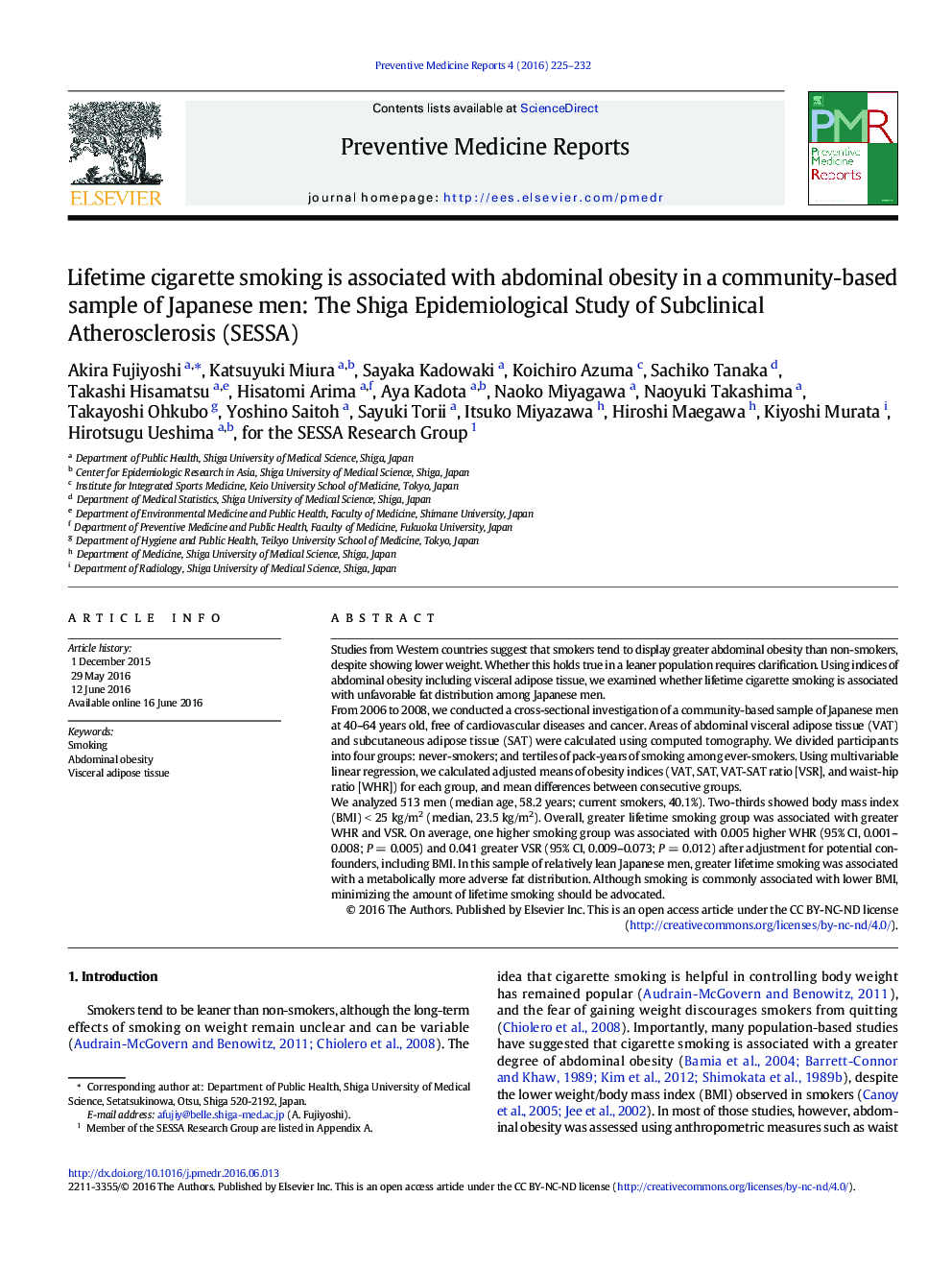| کد مقاله | کد نشریه | سال انتشار | مقاله انگلیسی | نسخه تمام متن |
|---|---|---|---|---|
| 4202264 | 1609088 | 2016 | 8 صفحه PDF | دانلود رایگان |
• Smokers tend to have greater abdominal obesity than non-smokers.
• We explored the relationship on a lean population-sample of Japanese men.
• Outcomes include waist-hip ratio (WHR) and visceral-subcutaneous area ratio (VSR).
• Greater lifetime smoking was associated with greater WHR and VSR.
Studies from Western countries suggest that smokers tend to display greater abdominal obesity than non-smokers, despite showing lower weight. Whether this holds true in a leaner population requires clarification. Using indices of abdominal obesity including visceral adipose tissue, we examined whether lifetime cigarette smoking is associated with unfavorable fat distribution among Japanese men.From 2006 to 2008, we conducted a cross-sectional investigation of a community-based sample of Japanese men at 40–64 years old, free of cardiovascular diseases and cancer. Areas of abdominal visceral adipose tissue (VAT) and subcutaneous adipose tissue (SAT) were calculated using computed tomography. We divided participants into four groups: never-smokers; and tertiles of pack-years of smoking among ever-smokers. Using multivariable linear regression, we calculated adjusted means of obesity indices (VAT, SAT, VAT-SAT ratio [VSR], and waist-hip ratio [WHR]) for each group, and mean differences between consecutive groups.We analyzed 513 men (median age, 58.2 years; current smokers, 40.1%). Two-thirds showed body mass index (BMI) < 25 kg/m2 (median, 23.5 kg/m2). Overall, greater lifetime smoking group was associated with greater WHR and VSR. On average, one higher smoking group was associated with 0.005 higher WHR (95% CI, 0.001–0.008; P = 0.005) and 0.041 greater VSR (95% CI, 0.009–0.073; P = 0.012) after adjustment for potential confounders, including BMI. In this sample of relatively lean Japanese men, greater lifetime smoking was associated with a metabolically more adverse fat distribution. Although smoking is commonly associated with lower BMI, minimizing the amount of lifetime smoking should be advocated.
Journal: Preventive Medicine Reports - Volume 4, December 2016, Pages 225–232
